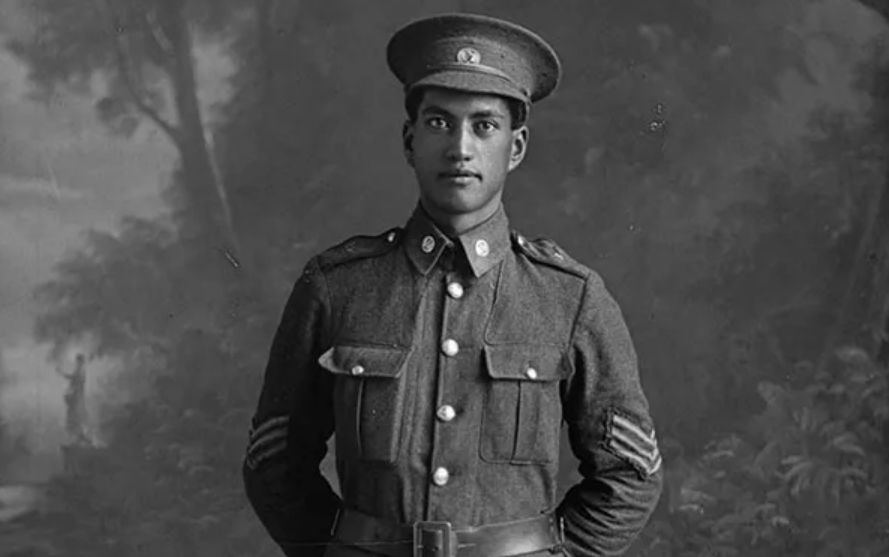

Heritage:
Avondale Racecourse
Avondale Racecourse is not only a hub for New Zealand’s equine heritage but also a symbol of the country’s resilience and multifaceted history. Any development of this land should acknowledge our stories from the past, including the rich heritage of the Avondale Jockey Club.
The significance of the racecourse stretches beyond the track, with deep connections to military history, community involvement, and national development. From the early days of horse racing to its pivotal role in both World Wars, the racecourse has witnessed many chapters of New Zealand’s story - where the world of horsepower met the demands of war.
The Jockey Club and Racing Legacy
Founded in 1890, the Avondale Jockey Club quickly became an integral part of Auckland’s sporting scene. The racecourse has been home to numerous prestigious events such as the Avondale Guineas and the Avondale Cup, drawing enthusiastic crowds of racing fans over the years. Its large grounds have hosted some of the most exciting moments in New Zealand’s thoroughbred racing history, becoming synonymous with the spirit of the sport.
The racecourse’s historical significance extends beyond the horses that raced here. For decades, it served as a focal point of community gatherings, economic activity, and social life. The tradition of horse racing, which has shaped Avondale’s cultural identity, is closely tied to the region’s growth and development.
Avondale as a Major Military Training Area
Avondale was also a major military training area during both World Wars, a fact that deepens the heritage of the racecourse and the surrounding area. As the country geared up for war, the vast expanse of the racecourse provided the perfect grounds for military training. During both World War I and World War II, the site was used for various training exercises, and the role of horses in warfare was not far from the minds of military planners.
In World War I, the Maori Pioneers, the precursor to the renowned Maori Battalion, trained at Avondale before they sailed to Egypt. They were soon reinforced by Pacific Islanders, including Rarotongans, Tongans, Niueans, and Samoans, whose contributions would prove vital in the war effort. The sense of history among these soldiers was palpable; they viewed themselves as the first Maori war party to travel overseas in centuries, adding a deep sense of pride and purpose to their mission. This training at Avondale marked a pivotal moment in the history of New Zealand’s military involvement.
Additionally, the New Zealand Tunnelling Company, made up of skilled miners, also trained at Avondale before heading to the battlefields of France. These troops, older and more experienced, were tasked with underground warfare—digging tunnels to plant explosives beneath enemy lines, a dangerous job that added an extra layer of strategy to the war effort.
The racecourse land was under the control of the Defence Department over the war years 1940 to 1947, so not used for racing in that period.
The racecourse land was under the control of the Defence Department over the war years 1940 to 1947, so not used for racing in that period. In World War II, Avondale’s role as a training ground expanded further, with many local people from the area contributing to the war effort, either by serving in the military or supporting essential home-front work, including women from the Women’s National Service Corps.
Horses and Aviation: A Unique Intersection of History
Perhaps one of the most fascinating aspects of Avondale Racecourse’s legacy is its connection to aviation. During the 1930s, the racecourse was used as a training ground for military pilots, who practiced aerial maneuvers in its wide-open spaces. This intersection of horsepower and aviation created an unusual but significant link between the world of equine sports and the emerging field of aviation, a connection that remains an important part of New Zealand’s military history.
Additionally, the role of horses in the war, particularly in transporting supplies and personnel, links Avondale's history to the broader context of New Zealand's military involvement. Horses were vital for the war effort, and their connection to the racecourse’s history gives a unique perspective on the role of animals in wartime.
During World War I, many of the New Zealand war horses trained at sites like Avondale before being sent to the harsh conditions of Europe and the Middle East. These horses played critical roles in transport and logistics, often forming emotional bonds with the soldiers who cared for them. However, after the war, many of these horses were abandoned or left behind in the deserts of Egypt, due to the high costs of shipping them back to New Zealand. The soldiers, having trained with these animals, faced heartbreaking decisions, with many horses simply being sold, abandoned, or slaughtered.
A Symbol of Resilience
Today, Avondale Racecourse stands not only as a place for horse racing but also as a symbol of New Zealand's resilience. The intertwining stories of military training, community involvement, and the history of horse racing highlight the endurance of the country and its people, both during times of peace and conflict.
The racecourse’s role in the training of soldiers, including the Maori Battalion and Pacific Islanders, and its connection to the Japanese internment camps and military hospitals, contribute to the broader national story of war and sacrifice. Its continued legacy as a sporting venue reminds us of the importance of community spaces in shaping national identity.
As we look back on the history of the Avondale Racecourse, it is clear that this site represents more than just a racetrack. It is a multifaceted heritage site that holds deep significance for both the local community and the wider nation, standing as a testament to the complex layers of New Zealand’s past.
Find out more about the history of Avondale Racecourse from these local historians whose research was referenced above.
https://medium.com/@johnsubritzky_2976/avondales-military-history-new-zealand-70db6b2cb275
https://timespanner.blogspot.com/search?q=avondale+racecourse










